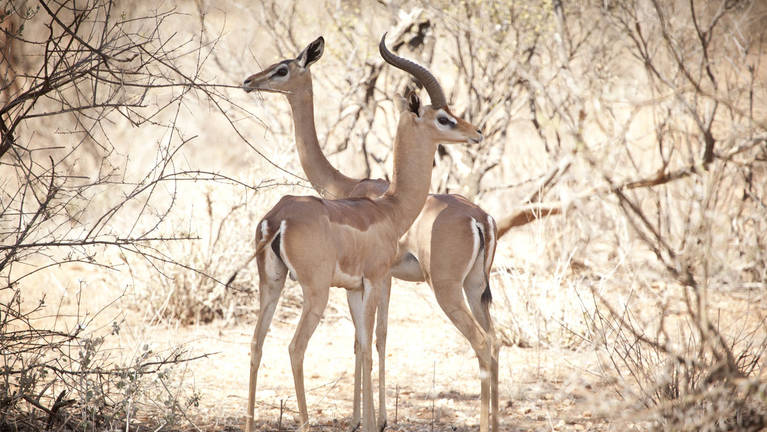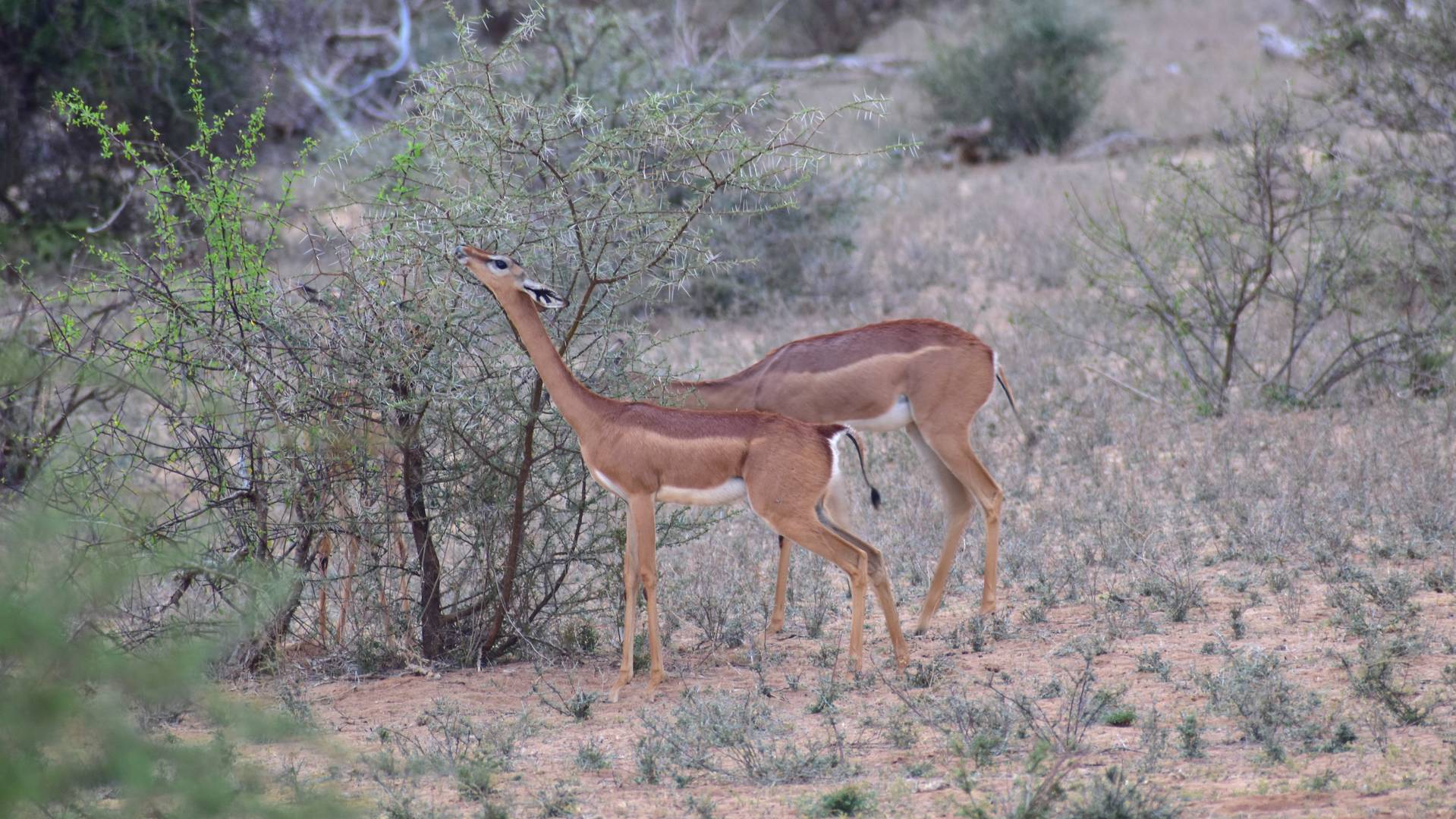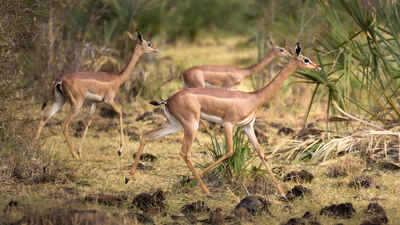Where to see Gerenuk in Tanzania
With its slender frame and extraordinarily long neck, this unmistakable East African antelope superficially resembles an attenuated impala. A specialist browser, it often stands on its back legs to extend its reach.

Quick facts about Gerenuk
| Scientific name: | Litocranius walleri | Habitat: | Flat, dry thornbush |
|---|---|---|---|
| IUCN status: | Near Threatened | Adult weight: | 28–52kg |
Gerenuk are closely related to gazelles, and have a similar tawny and fawn coat, but belong in a separate genus.
Occurring only in East Africa, these slender, large-eyed antelope inhabit dry bush country, where they use their specialised physique – notably long legs, and an exceptionally long neck – to browse at a height that other similar-sized herbivores can’t reach. They will even use their front legs to drag foliage down within nibbling reach.
Gerenuk are diurnal and generally form groups of two to six. Adult males – distinguished by their lyre-shaped horns – usually keep to themselves, marking their territory using their pre-orbital scent glands. The hornless females produce a single calf after seven months, giving birth in a secluded spot.
25–44cm
Length of male’s horns
3–6km²
Home range
2m+
Max browsing height
5
Countries in which it occurs
Where to see gerenuk in Africa
Gerenuks (pronounced with a hard g) are relatively easy to find in the few East African reserves where they occur. Once spotted, their build and behaviour renders them unmistakable.
Top tips for viewing gerenuk
To find a gerenuk, you should search the reserves of northern/central Kenya, notably Samburu and Meru. Smaller numbers also occur in the Laikipia region, Tsavo East and south to Tanzania’s Tarangire.
Where present, gerenuk are not hard to find – small groups typically browsing among thorny thickets and often performing their signature trick of standing on their back legs. It is always worth double-checking any glimpse of what appears to be a half-concealed impala. There is no point staking out waterholes, however, as gerenuk get all their water from their food.
Spend time around these antelope and you may find that they are surprisingly vocal, making alarm whistles, bleats and other communication calls. Today some 95,000 gerenuk remain; habitat loss is their greatest conservation threat.

Our best Tanzania holidays for gerenuk sightings
Based on our travellers' reports, these ideas for Tanzania safaris are likely to give the best gerenuk sightings

More information about gerenuk in our other destinations
Click here for detailed information about gerenuk in other countries, including the places for sighting gerenuk.



